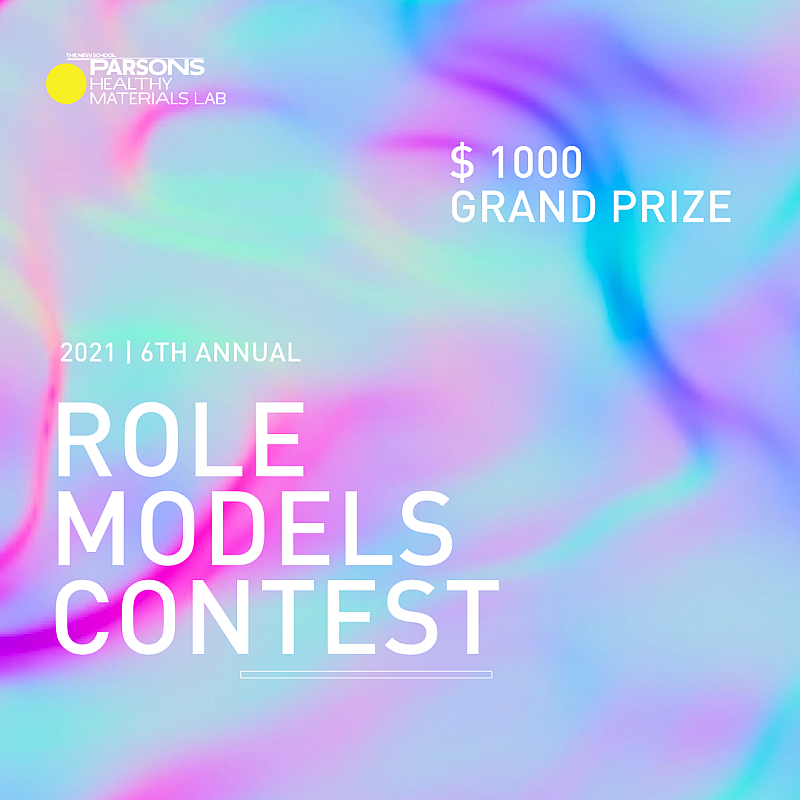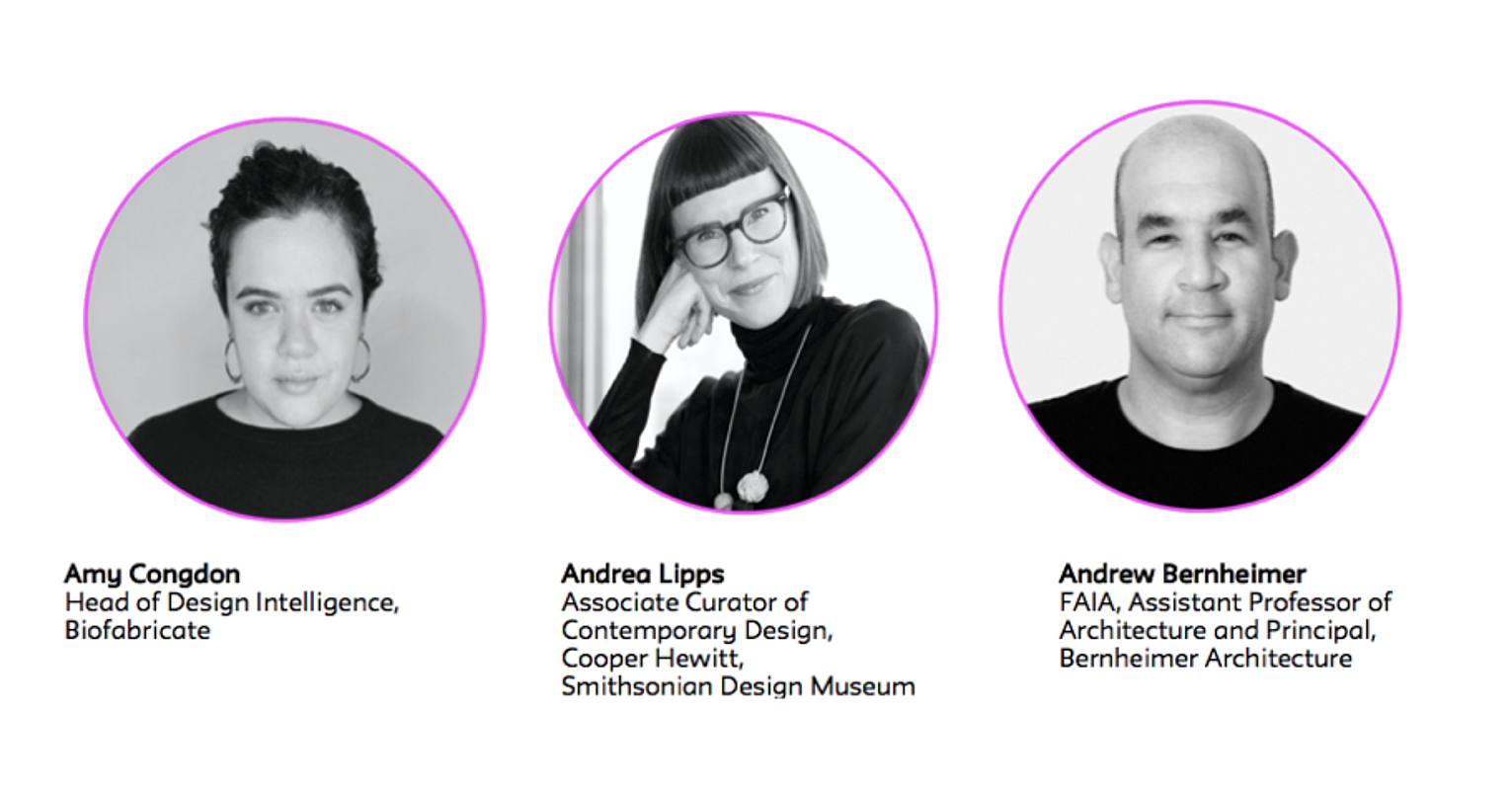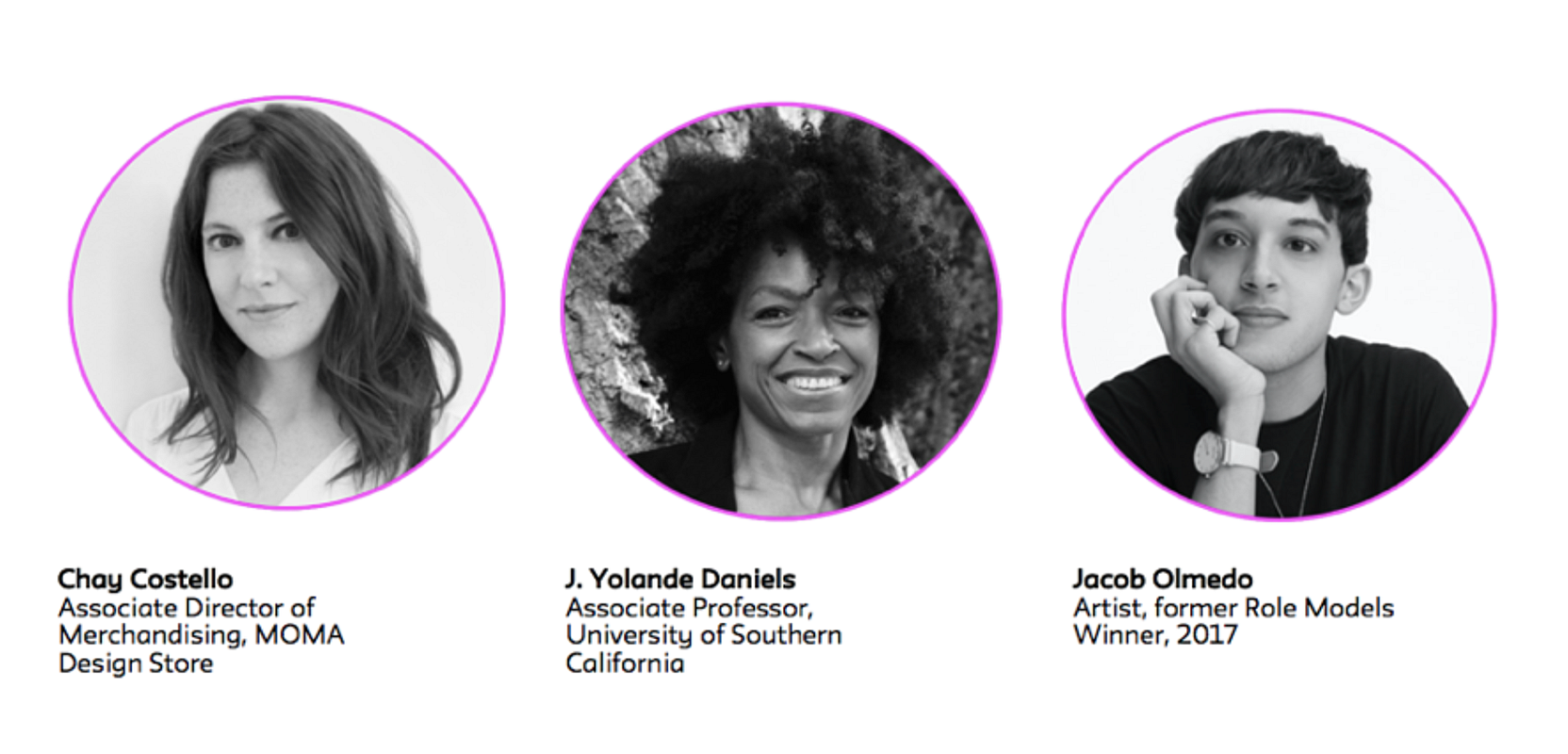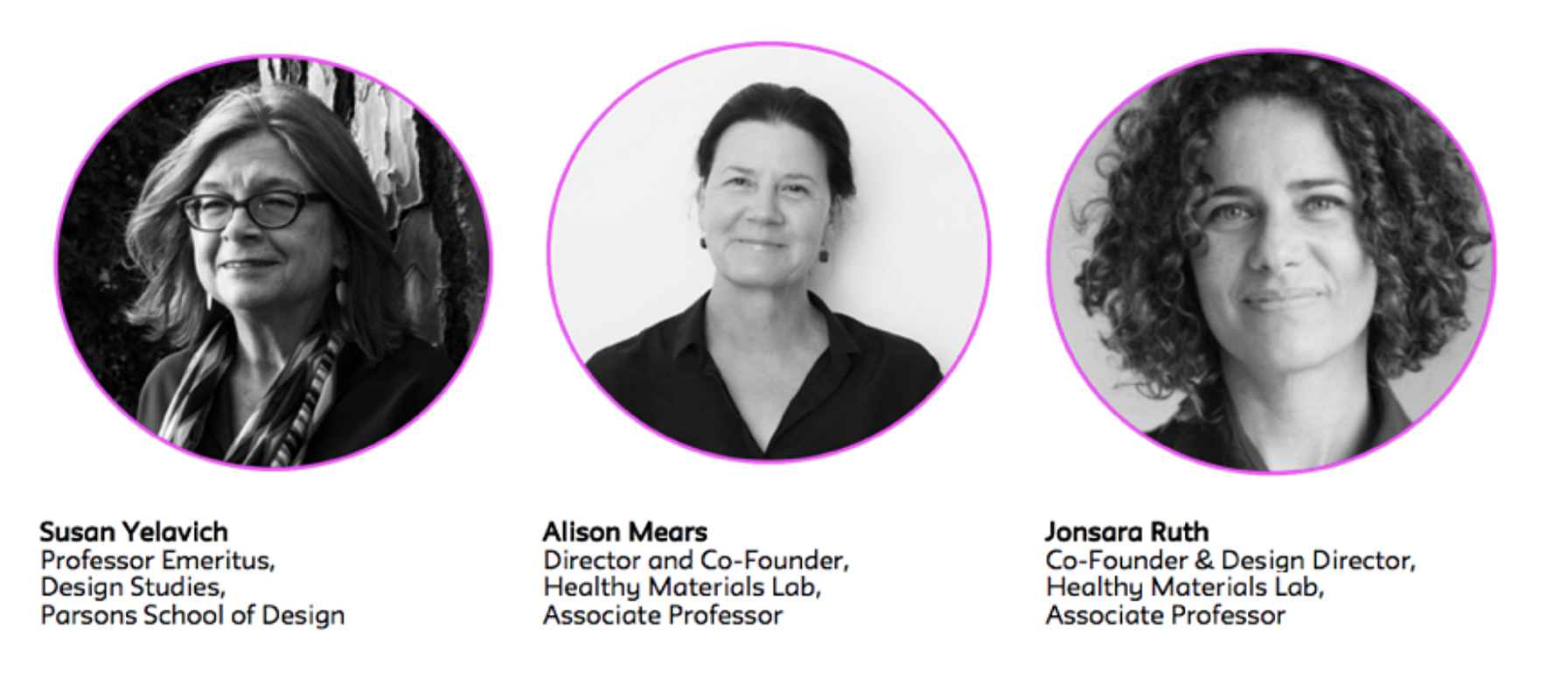In Spring 2021, Parsons Healthy Materials Lab hosted the sixth annual Role Models Contest. We initiated this contest to challenge students to combine design innovation with advocacy for healthier futures. The choices we make as designers can have profound and lasting impacts on our bodies, our communities, and our planet.

The past year has been challenging to say the least, yet it is clearer than ever that students have the ability to design a better world, especially when living through these difficult circumstances. This year we received a record-breaking number of submissions from over 35 universities in eleven countries including India, South Africa, and Colombia. Anonymous submissions were judged based on the following criteria:
Clear argument for positive health impact and environmental benefit
Clear Motivation for Material Choice
Demonstration of Innovation and Future Thinking
Demonstration of Carbon Impact
Compelling Aesthetics
Materials Transparency
Because of the large number of excellent submissions, we awarded two winners and four honorable mentions – all of whom exemplified the innovative use of healthy materials to provide design innovations for social and environmental issues.
Congratulations to this year's winners!
Grand Prize: Flood Points - Eric Hu, Anthony Vesprini, Nalin Chahal
Parsons School of Design | The New School







Flood Points
Flood Points asked the question “How do we design for rising tides?” For centuries, we have built structures that directly oppose the environment. Instead, Flood Points adapts to, rather than resists, environmental shifts. In their architectural proposal for the coastline of Northern Queens in New York City, students Eric Hu, Anthony Vesprini, and Nalin Chahal selected a multitude of problems to focus upon, including designing for sustainable energy sources, increasing transportation to the site, remediating harmful toxins from pollutants and sound pollution from the nearby airport. Yet, their primary focus was rising sea levels.
The buildings they designed would become a part of the coastland once sea levels rise. They would be built with the understanding that they would someday rest on the ocean floor and with materials that would not harm the aquatic environment. This radically reimagines the afterlife of buildings, which too often is not considered.
From the Judges:
“The Flood Points project was highly impressive, dealing with complex and timely issues. In addition to this, the team demonstrated a real depth and sophistication of research into the carbon impact of buildings - using this knowledge to closely inform their material choices. The speculative renderings were also beautifully realized, bringing their vision to life.”
Grand Prize: Rethinking Contact Lens Packaging - Ursula Michelle
Pratt Institute




Rethinking Contact Lens Packaging did just that. It competently transformed the way consumers view disposing of contact lenses through packaging design. Currently, lenses and their blister packs don’t get recycled because they are too small. Instead, these plastics go into landfills, sitting for hundreds of years until they break down when they could have been repurposed. Student Ursula Michelle proposed changing the entire system, all through smart packaging design. In her proposal, the box that the lenses come in could be split in two. One part of the box would be used to dispose of the foil lids and used lenses, and the other part would be used to dispose of the blister packs. The box containing the blister packs could be composted––as the material had been replaced with compostable bioplastic. And the other package would be mailed back for recycling using a prepaid stamp.
From the Judges:
“Rethinking Contact Lens Packaging introduced a problem that we don’t think about, but is a part of our daily lives. It had a gorgeous design––they nailed every aspect of the design.”
“Rethinking Contact Lens Packaging was beautifully designed and the designer thoughtfully considered human behavior to make a new system as simple as possible.”
Honorable Mention: BIOdrain: A Purifying Biochar Paving Solution Derived from Municipal Solid Waste - Marla Brown
University of Minnesota





BIOdrain proposes using biochar from food waste as alternative paving stones to filter water before it reaches the soil, and therefore the groundwater. This project considered several serious issues, including capturing food waste, which currently accounts for 24% of solids arriving in landfills, and soil health, which is currently greatly impacted by toxics in the environment.
From the Judges:
“BIOdrain: A Purifying Biochar Paving Solution Derived from Municipal Solid Waste fantastically included permeability in it’s design so that there would be less runoff.”
“BIOdrain is a well designed system to remove toxics and help the environment, and a great alternative to concrete.”
Honorable Mention: The Earthen Blanket - Daniel Pope
The Bartlett School of Architecture, University College London






The Earthen Blanket proposes retrofitting housing in London to be more energy efficient using London clay, which is currently being displaced and sent to the landfill. The project offers an elegant solution using this abundant waste stream with 3D printing technology to insulate existing housing stock while maintaining vapor permeability and honoring the material’s heritage.
From the Judges: “The Earthen Blanket is an interesting project. I haven’t seen 3D printing used in retrofitting before, and there’s a lot of flexibility in the aesthetic.”
“The Earthen Blanket answers the question, how do you elegantly retrofit without restoring? Where is the design expression in renovation?”
Honorable Mention: Mourning Walk/ Burial Bricks - Samantha Cadigan
Colorado College





Mourning Walk/ Burial Bricks reimagines the American burial system. Instead of the costly and resource-intensive burial many choose for their loved ones, this project imagines the body as a building material. In this proposal, cremation ashes are mixed with adobe to form “burial bricks.” The bricks would then be used by each family to build a monument.
From the Judges:
“Mourning Walk/ Burial Bricks was brave to deal with death. It pushes people to think about death in a new way.”
“Mourning Walk/ Burial Bricks opens a bigger conversation about what is possible. How would different communities use and appreciate this process?”
Honorable Mention: (Stool)Stool - Mary Lempres, Charlotte Böhning
Pratt Institute




(Stool) Stool is a functional stool built by utilizing literal stool (aka dog feces) that would otherwise go to landfill. The project transformed animal biomass into biochar. As a way to encourage thought and conversation about the possible uses for our waste, the designers embedded a common waste product (and humor) into a functional furniture piece.
From the Judges:
“There is humor in (Stool) Stool. It was born from a pun but is actually well researched and is addressing a real problem.”
“In (Stool) Stool, there’s a fearlessness in working with this taboo.”
THANK YOU TO OUR JURY



Amy Congdon, Head of Design Intelligence, Biofabricate
Andrea Lipps, Associate Curator of Contemporary Design, Cooper Hewitt, Smithsonian Design Museum
Andrew Bernheimer, FAIA, Assistant Professor of Architecture and Principal, Bernheimer Architecture
Chay Costello, Associate Director of Merchandising, MOMA Design Store
J. Yolande Daniels, Associate Professor, University of Southern California
Jacob Olmedo, former Role Models Winner, 2017, Artist
Susan Yelavich, Professor Emeritus, Design Studies, Parsons School of Design
Alison Mears, Director and Co-Founder, Healthy Materials Lab, Associate Professor
Jonsara Ruth, Co-Founder and Design Director, Healthy Materials Lab, Associate Professor
Read More
Join Our Academic Network
Get Access to our carefully researched and curated academic resources, including model syllabi and webinars. An email from an academic institution or a .edu email address is required. If your academic institution does not use .edu email addresses but you would like to join the network, please contact healthymaterialslab@newschool.edu.
Already have an account? Log in